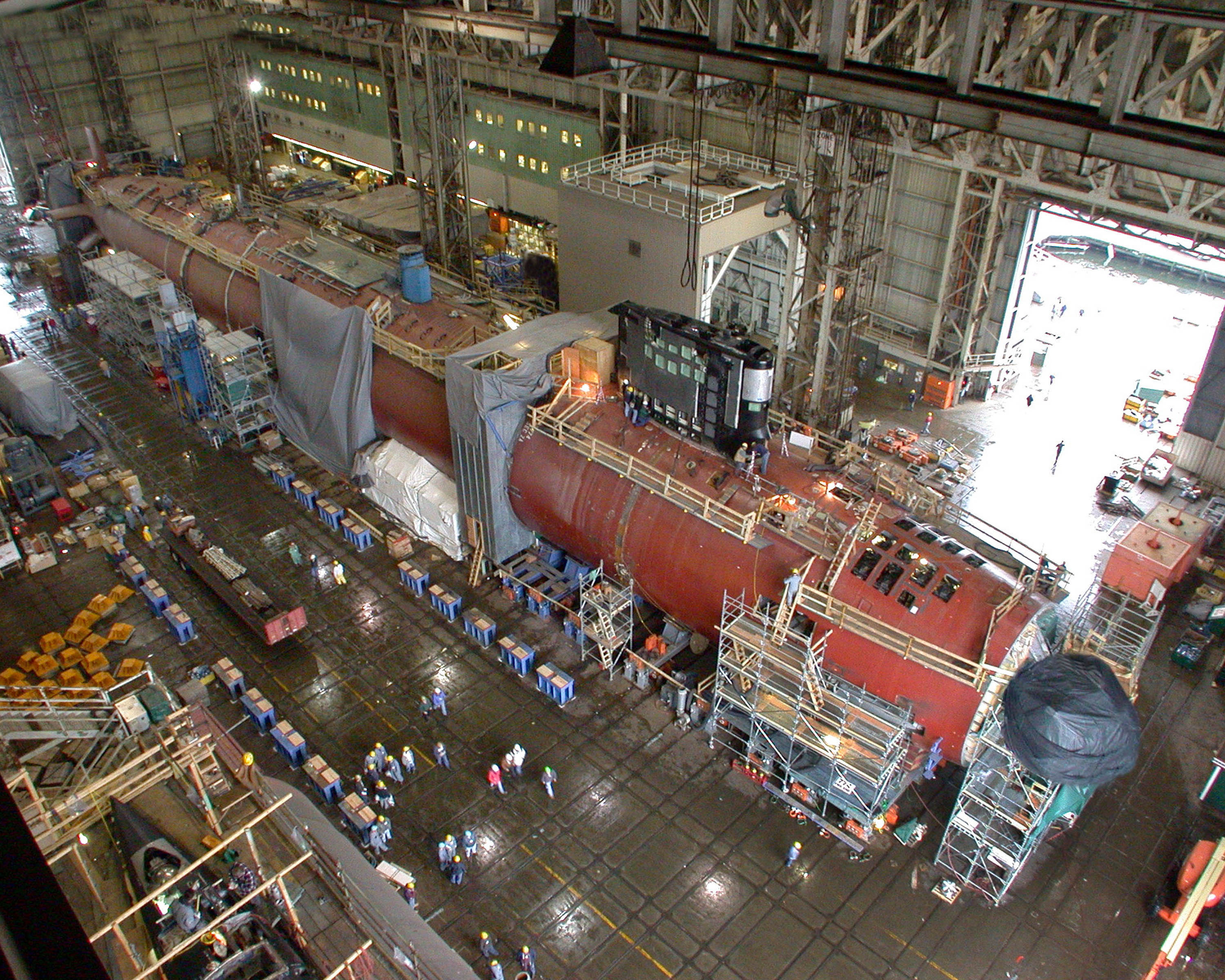
EN ROUTE TO JOINT BASE ANDREWS –To prevent submarine construction and maintenance delays, the Navy needs to provide its supplier base with a broader understanding of parts and equipment demands, the service’s top acquisition official said Tuesday.
Submarine parts suppliers are struggling to keep up with demand from the Navy, which is simultaneously building and maintaining a fleet of Virginia-class submarines while embarking on a massive program to build the new Columbia-class of ballistic-missile submarine.
“Traditionally, we have not always done as great a job as we could showing the supply base all of the demand we’re going to have out of them,” Geurts said to reporters while on a plane back from two days of meetings in Connecticut and Rhode Island with General Dynamics Electric Boat executives and representatives from New England maritime suppliers.
Geurts said the Navy could do a better job of effectively gathering information about what the parts and supplies needs for both building new submarines and maintaining current ones. More detailed information on the demand for parts across both the construction and maintenance enterprises would allow companies to determine whether it’s the right time to hire more workers, expand facilities and purchase new machinery.
“If they don’t see that signal, their return on investment calculation may not be fully formed,” Geurts said.
Earlier this year, Geurts told lawmakers that submarine builders and maintainers were competing for material. The result was delays to the new submarine construction process and a decrease in the operational submarine fleet’s readiness.
Late deliveries of parts were causing delays to the Virginia-class productions schedules. The Navy also experienced maintenance work delays. Submarines were out of service for more extended periods than expected, Geurts told members of the House Armed Services seapower and projection forces subcommittee in March.
To get a better handle on the Navy’s submarine parts requirements, Geurts said on Tuesday the 30-year maintenance plan is helping him pull together requests from all the organizations inside the Navy. The Navy in March released its first Report to Congress on the Long-Range Plan for Maintenance and Modernization of Naval Vessels for Fiscal Year 2020.
The 30-year maintenance plans states, “Achieving and sustaining 355-battle-force ships will require a continuous investment in the public and private industrial capacity and capability. This includes investments in additional infrastructure (e.g., dry docks and piers), training, and manpower. Shipyard capacity and workload leveling challenges will also require all stakeholder’s attention to ensure maintenance and modernization can be performed in a timely and efficient manner.”
The Navy’s recent adoption of cloud-computing by six major commands, including at least two that supply parts and material to the submarine community, will tremendously increase the accuracy of parts requirements the Navy shares with suppliers, Geurts said.
Cloud-computing will help the Navy determine, as close to real-time as possible, part types needed, part quantities required and the desired frequency of parts deliveries, Geurts said.
“Some of it is making sure on the government requirement side we’ve got it nailed down; some of it is really having a keen, at-our-fingertips, real-time understanding of our supply posture, supply need,” Geurts said. “Where I think technology will help with A.I. and machine learning, and all that, is to build smarter demand models so we can get out in front of problems instead of reacting to problems and then jerking the supply base around.”





